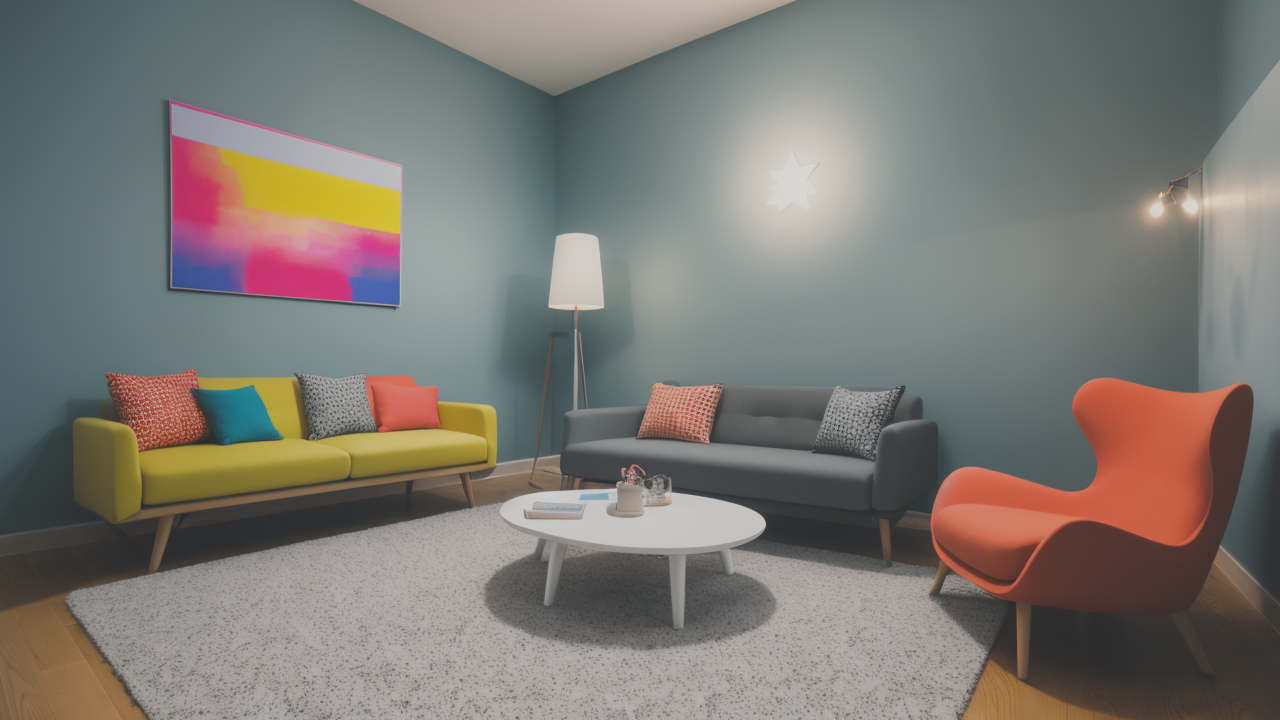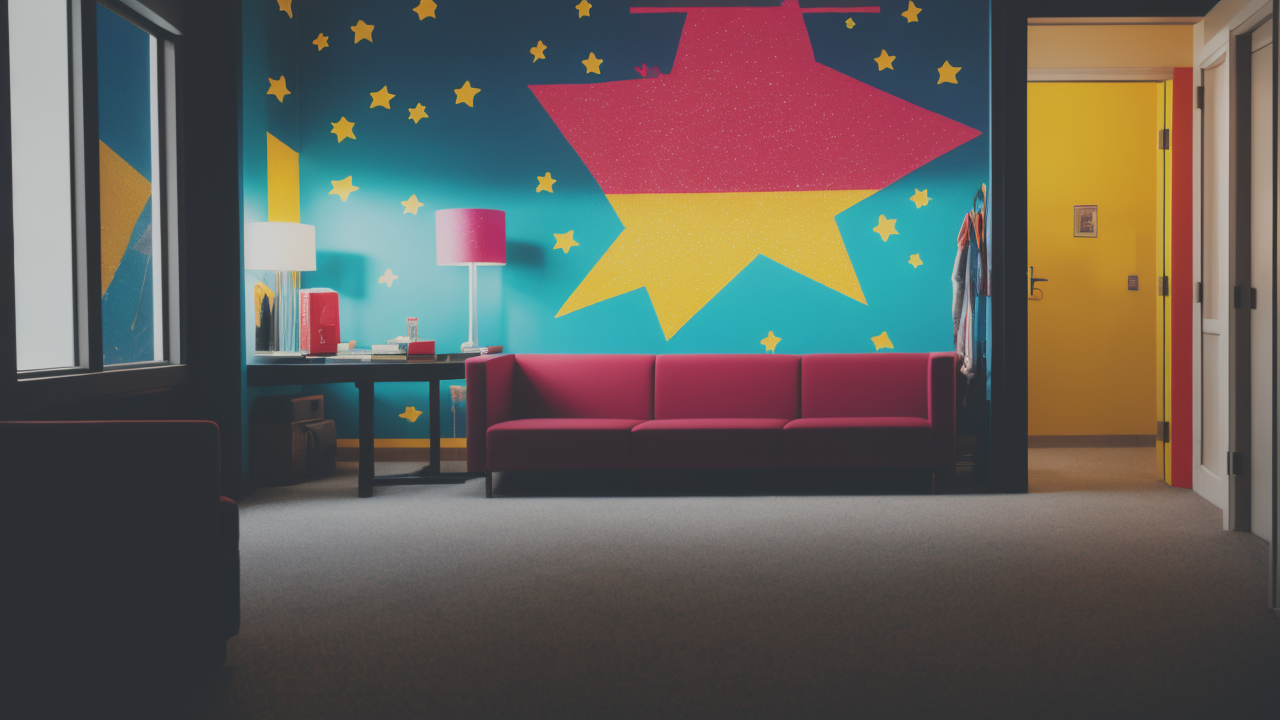
The Ultimate Guide to Mixing Pop Art and Modern Americana in Interior Design
Understanding the Significance of Pop Art in Interior Design
The History of Pop Art and Its Influence on Decor
Pop Art emerged in the 1950s as a bold new art movement. It challenged traditional fine art norms. Artists like Andy Warhol and Roy Lichtenstein led the way. They used everyday objects and popular culture as inspiration. This fresh approach soon found its way into homes and offices.

Pop Art brought a playful spirit to interior design. It introduced bright colors and bold patterns. Designers began using quirky, fun elements in their work. Pop Art-inspired furniture became popular. The Egg Chair and Marshmallow Sofa are iconic examples.
The movement's influence on decor was significant. It blurred the lines between high and low culture. Soup cans and comic strips became art. This new freedom changed how people decorated their spaces. It made interiors more personal and expressive.
The Psychological Effects of Pop Art on Consumers
Pop Art in interiors can have a big impact on mood and behavior. The bright colors can boost energy and happiness. Familiar images can create comfort and nostalgia. At the same time, the art often has deeper meanings that make people think.
In homes, Pop Art can create a fun and lively atmosphere. It can make spaces feel more welcoming and less formal. In offices, it can spark creativity and inspire new ideas. In stores, it can grab attention and encourage customers to stay longer.
Studies show that color and imagery affect our emotions and actions. Pop Art uses both in powerful ways. It can make spaces feel more exciting and memorable. This is why many brands use Pop Art in their marketing and store designs.
The Role of Pop Art in Contemporary Interior Design Trends
Today, Pop Art remains a key player in interior design. It offers a way to add personality and energy to any space. Designers use it to create focal points and add splashes of color. It works well in both modern and traditional settings.
In current trends, Pop Art is often mixed with other styles. It can add a fun touch to a minimalist room. Or it can bring a modern feel to a classic space. Digital art has opened up new ways to use Pop Art. Now, art can change and move, keeping spaces fresh and interesting.
Pop Art fits well with the current love of bold, expressive interiors. It allows people to show their personality through their decor. As people seek unique and Instagram-worthy spaces, Pop Art remains a popular choice.
Incorporating Abstract Pop Art into Home and Commercial Spaces
Selecting the Right Pieces for Your Home
Choosing Pop Art for your home is an exciting process. First, think about the size of the art and your space. A big, bold piece can be the star of a room. Smaller works can add pops of color throughout your home. Consider the mood you want to create. Bright, lively pieces can energize a space. More subtle works can add a touch of cool.

Look at the colors in the art and in your room. They should work well together. Think about what the art means to you. It should be something you enjoy looking at every day. Don't be afraid to mix different styles of Pop Art. This can create an interesting, collected look.
Here are some tips for choosing Pop Art:
- Pick pieces that speak to you personally
- Consider the color scheme of your room
- Think about the size and scale of the art
- Mix different Pop Art styles for a unique look
Integrating Pop Art into Commercial Settings
Pop Art can transform commercial spaces. It can create a strong brand image and memorable experiences. In offices, it can inspire creativity and make work more fun. In stores, it can draw customers in and encourage them to stay longer. In restaurants, it can set a lively mood.
Consider using custom Pop Art that includes your brand colors or images. Large murals or installations can create immersive experiences. Interactive Pop Art can engage customers in new ways. Remember to balance bold art with calmer elements for a cohesive look.
Here are some ideas for using Pop Art in commercial spaces:
- Use Pop Art to reinforce your brand identity
- Create Instagram-worthy moments with large-scale pieces
- Rotate art regularly to keep the space fresh
- Balance bold Pop Art with more neutral design elements
The Importance of Authenticity in Pop Art Reproduction
When using Pop Art in design, authenticity matters. Original works can be very expensive. But there are good options for high-quality reproductions. Look for authorized prints or limited editions from trusted sources. These can capture the spirit of Pop Art without breaking the bank.
Digital displays offer new ways to show Pop Art. You can display many works on one screen. Or show art that changes over time. But be sure to respect copyright laws when using digital art. Always get proper permission and licensing.
Consider these points when choosing Pop Art reproductions:
- Research the artist and the artwork's history
- Buy from reputable sources that respect artists' rights
- Look into limited edition prints as a middle-ground option
- Explore digital options for flexible art displays
Case Studies: Transformative Impact of Pop Art on Interior Design
Residential Projects: Revitalizing Living Spaces
Case Study 1: A Modern Makeover

A family in Seattle wanted to update their home. They chose Pop Art as the main theme. They added a large Lichtenstein print in the living room. It became the room's focal point. They echoed its colors in throw pillows and rugs. The result was a vibrant, cohesive space.
The family reported feeling more energized in their new space. The bright colors and bold patterns lifted their mood. The art became a great conversation starter when they had guests over. It made their home feel unique and personal.
Case Study 2: Small Space, Big Impact
A New York apartment used Pop Art to maximize impact in a small space. They commissioned a Haring-inspired mural for one wall. The bold black and white design made the room feel bigger. It added energy without overwhelming the space.
Commercial Success Stories: Boosting Brand Identity with Pop Art
Case Study 1: Hotel Transformation
A boutique hotel in Miami used Pop Art to create a unique identity. Each floor featured a different Pop artist's style. The lobby had a rotating exhibit of local Pop Art. This approach turned the hotel into a destination for art lovers.
The hotel saw a 30% increase in bookings after the redesign. Guests shared photos of the art on social media, boosting the hotel's online presence. The Pop Art theme extended to their marketing, creating a cohesive brand image.
Case Study 2: Tech Office Redesign
A tech startup in San Francisco used Pop Art to energize their office. They installed digital displays showing Pop Art throughout the space. Meeting rooms were named after famous Pop artists. The design helped attract top talent and impressed clients.
Employees reported feeling more creative and collaborative in the new space. The company saw an increase in productivity and job satisfaction. The Pop Art decor became a key part of their company culture.
Future Trends: The Growing Demand for Pop Art in Interior Design
The future looks bright for Pop Art in interior design. People want homes and spaces that express their personality. Pop Art fits this trend perfectly. We're likely to see more mixing of Pop Art with other styles. This could create new, exciting looks.
Digital art and NFTs are changing how we display art. This opens up new possibilities for Pop Art in design. We might see more interactive or changing art displays. There's also a growing trend of using Pop Art to make social statements in design.
As sustainability becomes more important, we may see more eco-friendly Pop Art. This could include art made from recycled materials. Or digital art that doesn't need physical production. The bold, expressive nature of Pop Art will continue to inspire designers and homeowners alike.


